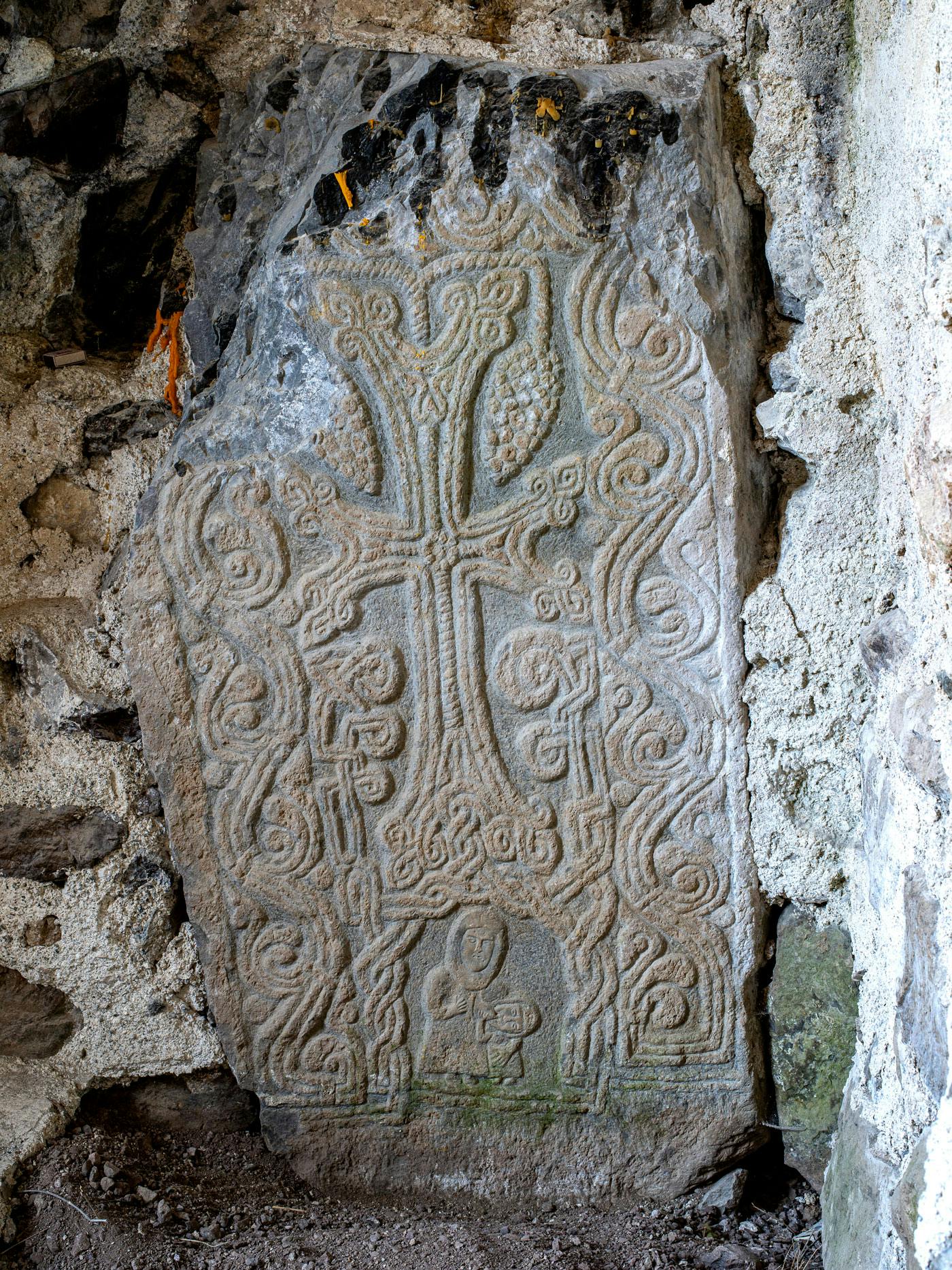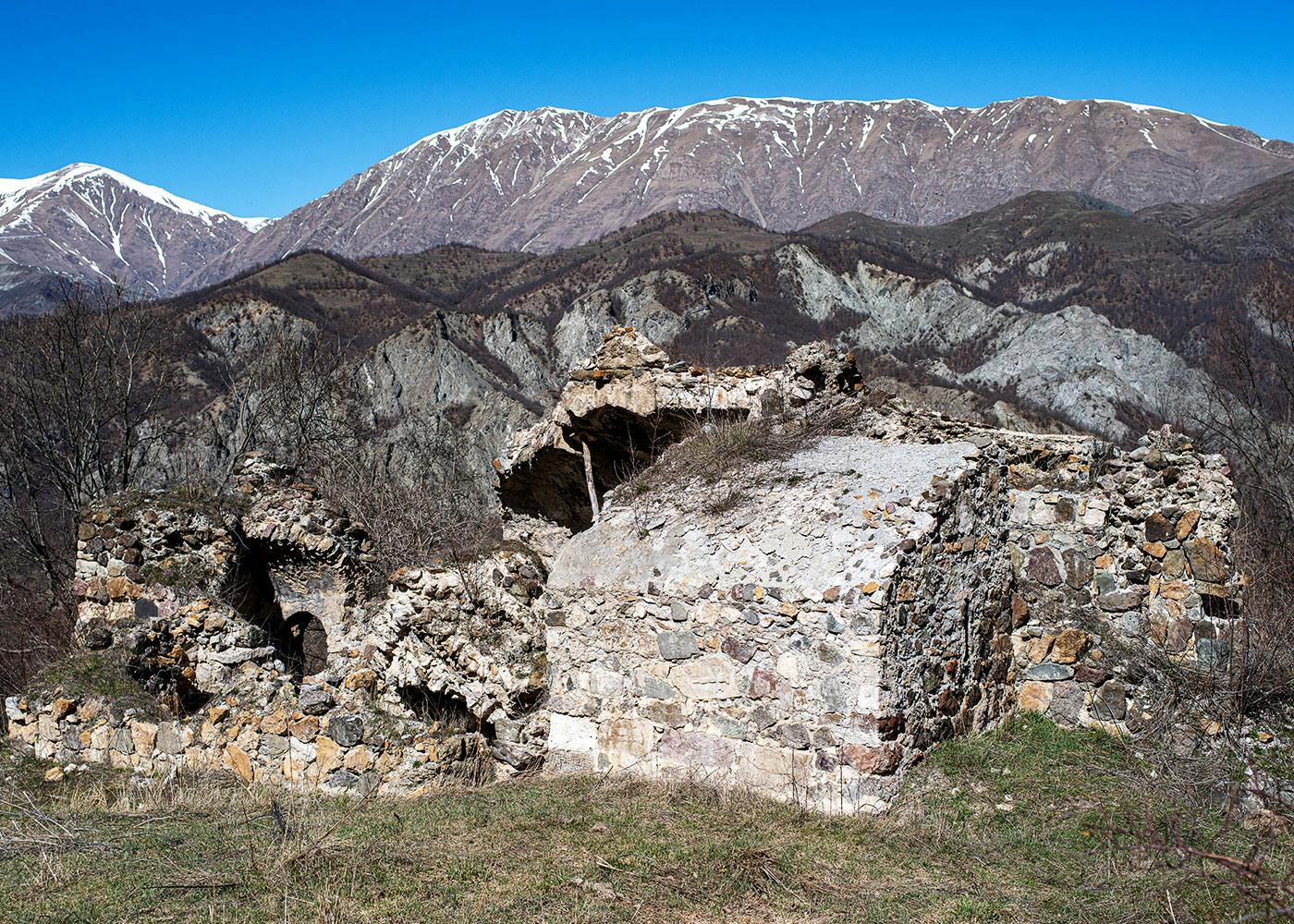In the center of a thickly wooded valley, near the ninth-century fortress of Handaberd, there is a medieval monastery that contains an unusual khachkar. Khachkars are important symbols of Armenian religion, identity, and craftsmanship; they are carved stone slabs befitting the name—a fusion of the Armenian words khach- (cross) and -kar (stone).
On first glance, the late twelfth-century khachkar near Handaberd seems similar to thousands of others found at churches and Armenian communities throughout history. It featured a typical Armenian cross of the eleventh and twelfth century, the tips of its wings ornamented with three-leaf buds (see image below). But the Handaberd khachkar bears an unusual scene: below the cross is the smaller image of an Armenian woman nursing her child. She is shown in a traditional dress worn by mothers in that period.[1]
Above: Listen to historian and local resident Gevorg Petrosyan share his final memories of Handaberd, alongside aerial images of its fortress and monastery.

Above: Khachkar of Handaberd, 13th century

Above: Detail of the "Mother and Child" from the khachkar
The location of the khachkar in a monastic chapel invites us to consider its theological and liturgical, as well as its social and funerary, meanings. Early church fathers, including Saint Clement and Saint Cyril, both of Alexandria, whose works were known in medieval Armenia, associated the Virgin’s milk with the blood of Christ.[2] Visible to all who entered the chapel, the khachkar would have thus provided, as much as the sermons and prayers of the clergy, a kind of theological teaching of its own, communicated through carved stone as opposed to words.[3]
Left: Handaberd church from southeast
Right: Handaberd church from south
Khachkars were built to commemorate major events in history or in the life of those who commissioned them. They carried the prayers of the people into the far distant future. The Armenian-language inscriptions of the many khachkars at Handaberd monastery are a testament to their ancient faith, carved into stone:
“Date 1196. I Erected This Khachkar in the Memory of My Son Khosrov Who Died Amid the Strangers.”
“I Vasak, The Grandson of Harb, Erected This Cross, I and My Mother. Whoever Worships . . . Remember My Prayers.”
“I, Jalab, Erected This Cross for the Salvation of the Soul of My Brother Khapl, So That You May Worship and Remember My Prayers. In the Year 1194.”
“I Erected This Cross for the Worship Remembership and Remembrance of My Prayers. Year 1197.”[4]

